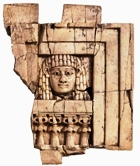Gods & goddesses in the Bible
Bible study resource
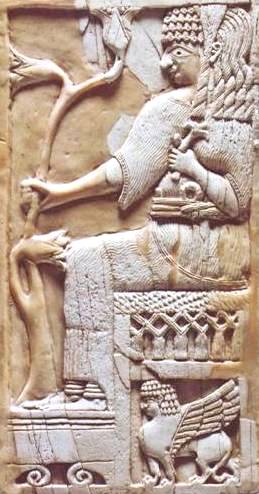 Why does it rain?
Why does it rain?
How do plants grow?
Why are there good years and bad ones?
And above all, how do we humans make sense of our world?
The Canaanites, who lived in the land that became Israel, believed the earth was ruled by powerful forces. We call them gods and goddesses, but a modern name might be Nature.
Who were the best-known gods and goddesses? There was the violent male force Baal, who impregnated the earth through his semen (rain). And there was Anat the mother, fierce protectress of the family.
The stories and poetry about these forces of Nature appealed to many of the Israelites who had abandoned nomadic herding and settled down to farming. Life could be hard for them, and they needed a belief system that related to getting food from the land.
Why did people have gods and goddesses?
It goes like this: in Canaan and the Eastern Mediterranean, the summers are hot and rainless. All the rain falls in the winter, usually during and after violent storms and cloudbursts.
To put it into story form, Ba’al was rain, water, who fought with and killed his brother Mot, god of death and the rainless season (shades of Cain & Abel? There was an annual struggle between the two brothers Baal and Mot).
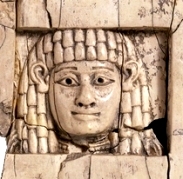
Ivory carving of the Woman at the Window, from Nimrud
What happened then? Ba’al was killed. With his death, all growth ceased and life languished.
Then Ba’al’s sister, the maiden Anat, came to the rescue and killed Mot, “With sword she cleaves him, with fan she winnows him, With the fire she burns him, with handmill she grinds him. In the field she scatters his seed”. ‘
Anat carried Ba’al’s body to a sacred mountain top. There she performed an elaborate sacrifice and brought Ba’al back to life.
The cycle of life and growth could begin again. In the words of the Ugarit epic, “the heavens fat did rain, the wadis (river-beds) flow with honey”.
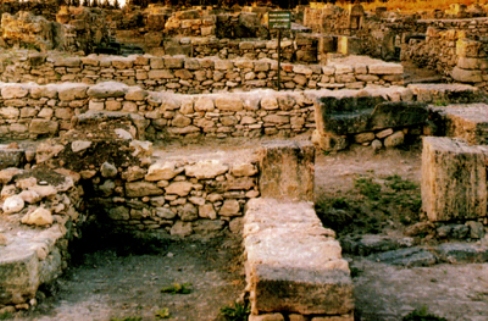
Excavations at the ancient city of Ugarit, where the Baal/Anat epic was discovered
Who were the goddesses?
The most important goddesses were
-
The Lady Asherah, wife of El-Dagon, mother of gods
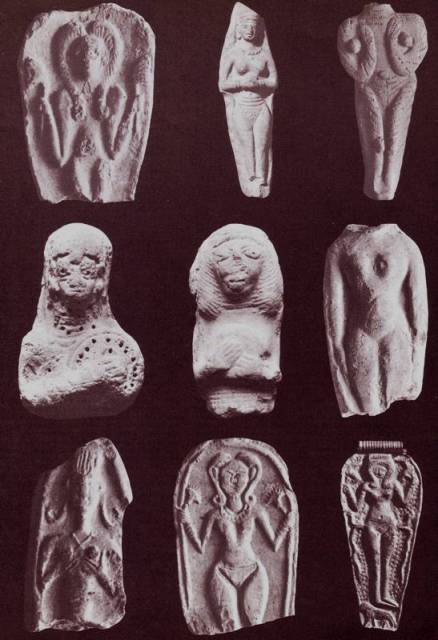
Statuettes of a goddess
Asherah was the supreme mother goddess. She was also “Athirat-Yam”, Asherah of the Sea, goddess of the sea and fishermen, and supreme goddess in Tyre and Sidon – remember that Queen Jezebel of Israel came from Sidon.
Asherah gave life to everything, good and bad alike. As the mother of the gods, she assigned responsibilities to each one according to his (or her) character.
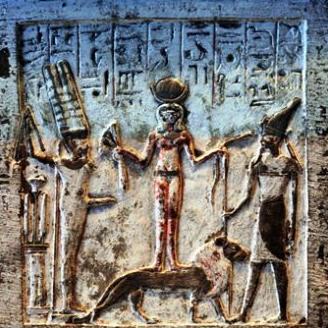
Egyptian carving, New Kingdom (1150-1090BC) Asherah standing on a lion’s back
Look at this Egyptian carving dating from the New Kingdom (1150-1090BC). It shows the goddess standing on the back of a lion (power), holding a bunch of lotus flowers (life) and a serpent (healing, magic). Notice that she holds the serpent in her left hand (the unfavourable hand).
In the Bible, Jeremiah (44:17) reproached Hebrew women for worshipping Asherah as the ‘Queen of Heaven’.
-
Ishtar, or Astarte in Greek
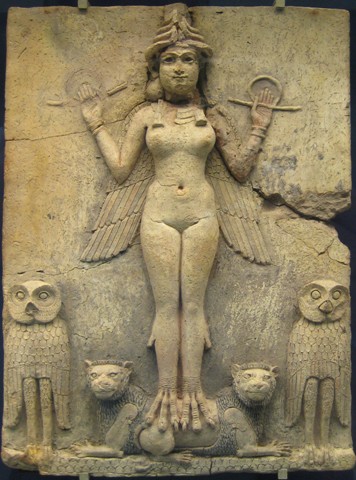
Astarte-Ishtar
Ishtar embodied two female qualities:
- she produced children
- she fiercely protected her family against danger from outside.
Ishtar became known throughout Syria and, later, Israel. She is shown mounted on a lioness (triumph), armed with a sword (courage) and wearing a fluted crown that identified her with the planet Venus (beauty, erotic pleasure).
Poor Asherah. The cult of Ishtar spread throughout Canaan, obliterating her memory.
The practice of sacred prostitution as a magical means of ensuring fertility (for people, their flocks and crops) was especially linked with Ishtar-Astarte.
Who were the gods?
-
El, Supreme Father God
The ‘creator of creatures’ and supreme father is also “Kindly El, Benign”, the “King” and, sometimes “Bull El, my Father”. “El” is the Semitic word for God. You see it in the biblical El and Elohim.
El lived in a remote dwelling at the ‘source of the rivers of the Floods’. When the gods wanted to consult him, they had to travel to this remote paradise. In the same way, in Genesis, the Garden of Eden is placed at the source of the four great rivers.
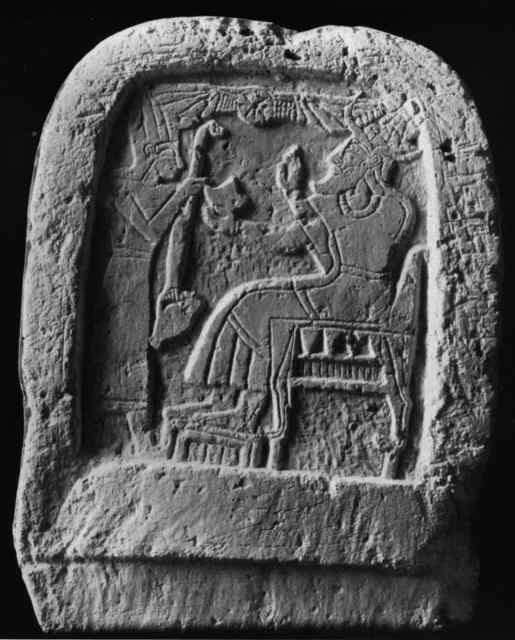
This stone carving from Ugarit (above) shows a bearded god seated on an elaborate lion-footed throne. A king or priest presents an offering which is accepted. It is believed this figure is El, ‘supreme father’.
But El seemed too remote for simple people. Interest in him began to wane and people wre drawn to to his more adventurous, interesting children.
-
Ba’al, the storm god, son of El
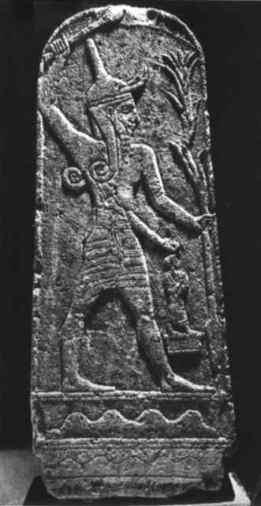
Baal with his thunder and lightning, stone stele
There is no doubt about it: the dominant figure among the Canaanite gods was the great storm-god Ba’al. His name means “master” or “lord.
Ba’al was the personification of life-giving forces in Nature, especially rain – remember that the Middle East is often short of rain, and needs rain desperately if crops are to grow.
Baal is the god who appears most often in the Bible, always as a baddie. Later on, Baal over-shadowed his father completely, and became the principal god of the sky, the earth and its fertility.
-
Stories about Baal and Anat
One of the Baal epics found at Ugarit describes how Baal is killed by Asherah (the original mother goddess) and a group of monsters she has borne. Baal’s friends mourn for him but his sister Anat is not just grief-stricken. She is determined to take revenge. She has a single-hearted devotion to her brother:
“Like the heart of a cow for her calf; Like the heart of an ewe for her lamb, So is the heart of ‘Anat for Baal.”
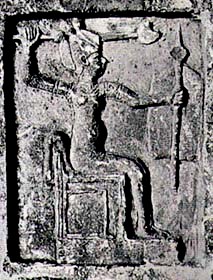
Anat with implements of power/war
Anat gloried in war. In her thirst for blood, she “smote and slew from seacoast (to the west, meaning sunset) to sunrise” in a night of general massacre. At one stage in the story, she filled her temple with men and barred the doors. Hurling heavy tables and furniture at them, she waded in blood up to her knees, even to her neck. “Her liver swelled with laughter; her heart was full of joy.”
At last she washed her hands in the blood — and went cheerfully off to another adventure.
In spite of her bloodthirsty nature, it was Anat, more than any other female divinity who was the symbol of motherhood and vitality. This gave her one of her other names, the “Power of Life”.
The best image we have of the rain-god Ba’al is a stele found in Ugarit showing a god bestriding the mountains with a club in one hand and a shaft of lightning in the other (see above). References in the epics to Ba’al as god of the storm, who spoke in the thunder and whose voice resounded through heaven and earth, seem to fit in very well with this “Ba’al of the Lightning”.
The cycle of life and death
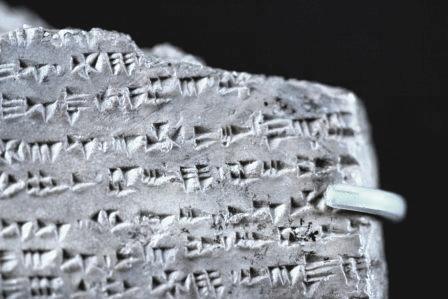
Part of the clay tablet on which is inscribed the epic of Baal and Anat
The most striking of the poems unearthed on clay tablets at Ugarit is the epic of Ba’al’s death and revival. It provides the mythical explanation for the annual cycle of death and resurrection in the seasons.
It is suggested that the myth was re-enacted so that the forces of Nature could be reactivated: the soil would produce crops again, and man and beast would survive, and thrive.
But the celebration of this story enraged the priests of Yahweh, who insisted that there was only one god, and to venerate Anat or Baal was punishable by death – see the Massacre at the Wadi Kishon.
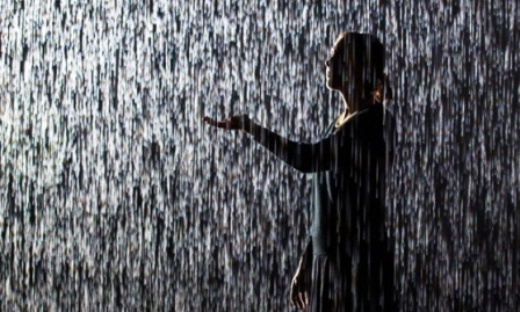
Rain: Photograph by Dominic Lipinski/PA Wire
Search Box
![]()
© Copyright 2006
Elizabeth Fletcher

